Hybrid NUflex is ready for the fall semester. Are you?
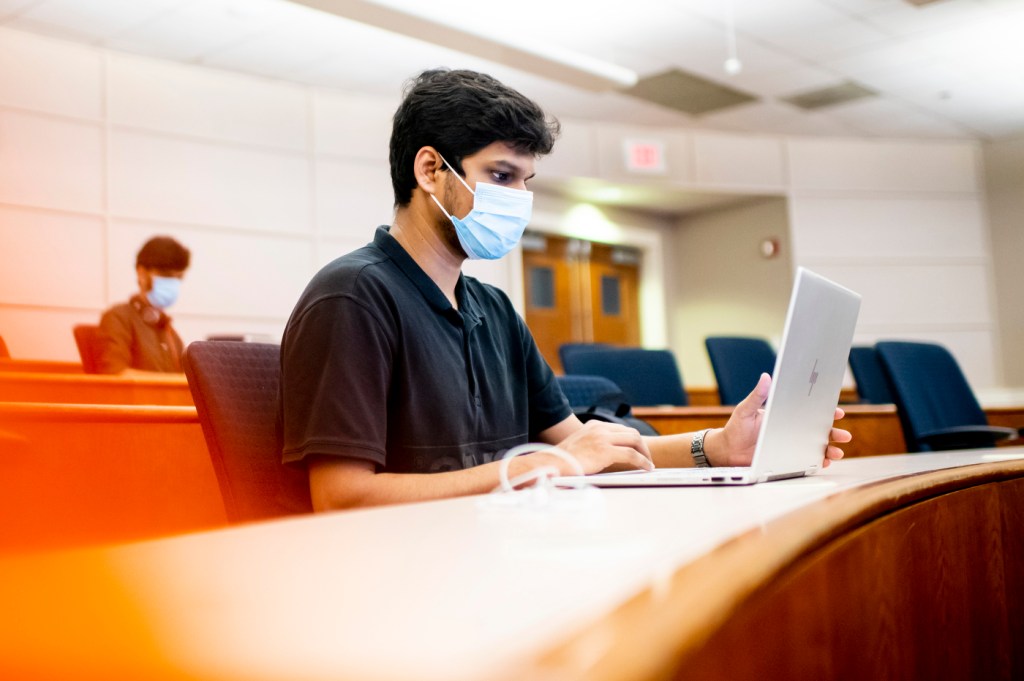
Eight cupcake-shaped microphones extend from the ceiling like futuristic stalactites. Two swiveling cameras flank the clock at the front of the room, taking aim at the rows of desks. A single camera at the back focuses its lens on the instructor, blackboard, and projection screen.
Northeastern’s classrooms are ready for hybrid learning.
To help meet density restrictions necessitated by the ongoing pandemic and provide flexibility for students and faculty, Northeastern has created a hybrid learning model called Hybrid NUflex. It will allow students, more than 80 percent of whom plan to return to campus, to learn, pose questions, and participate in discussions and group work together in both the classroom and at home.
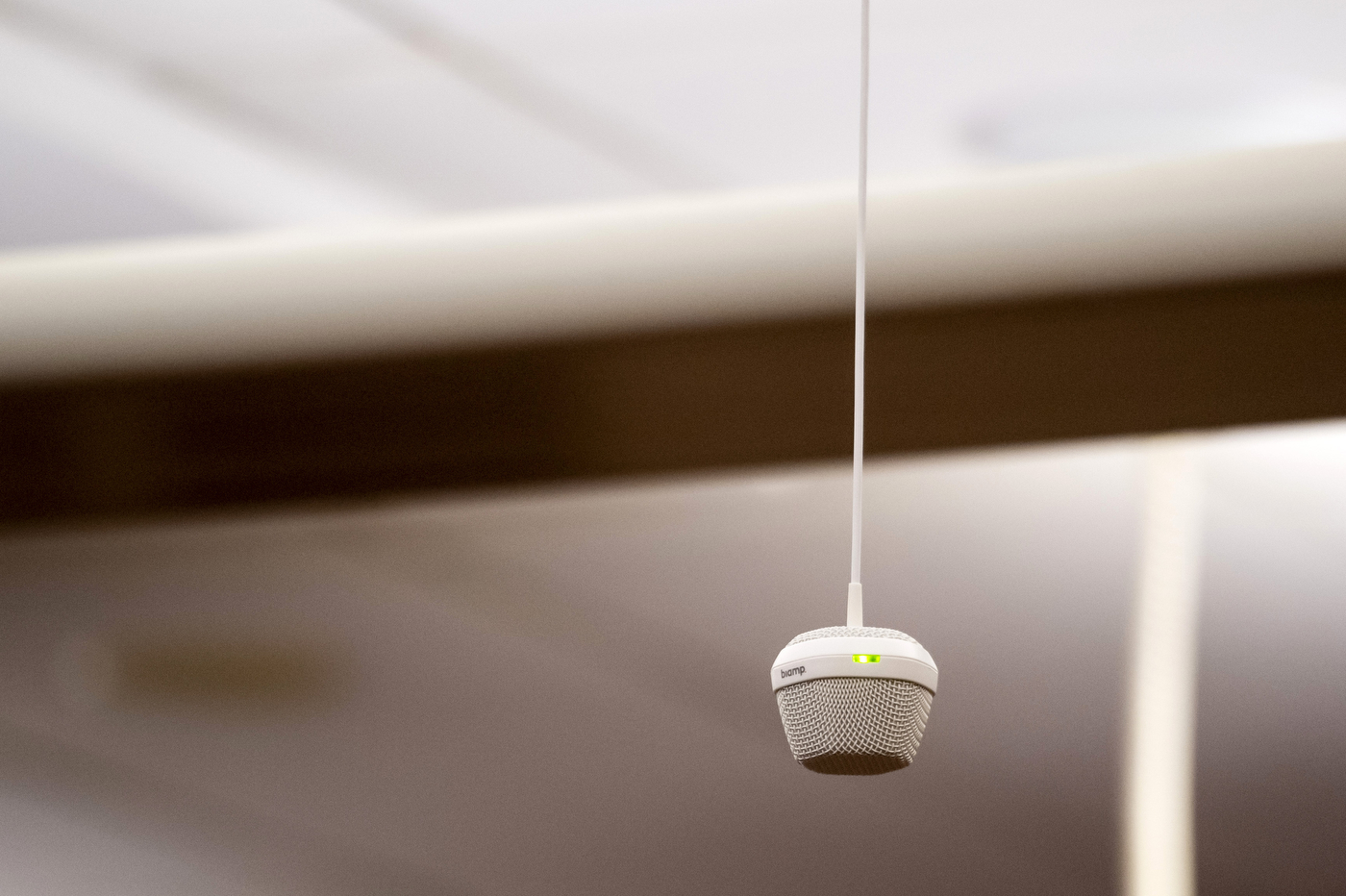
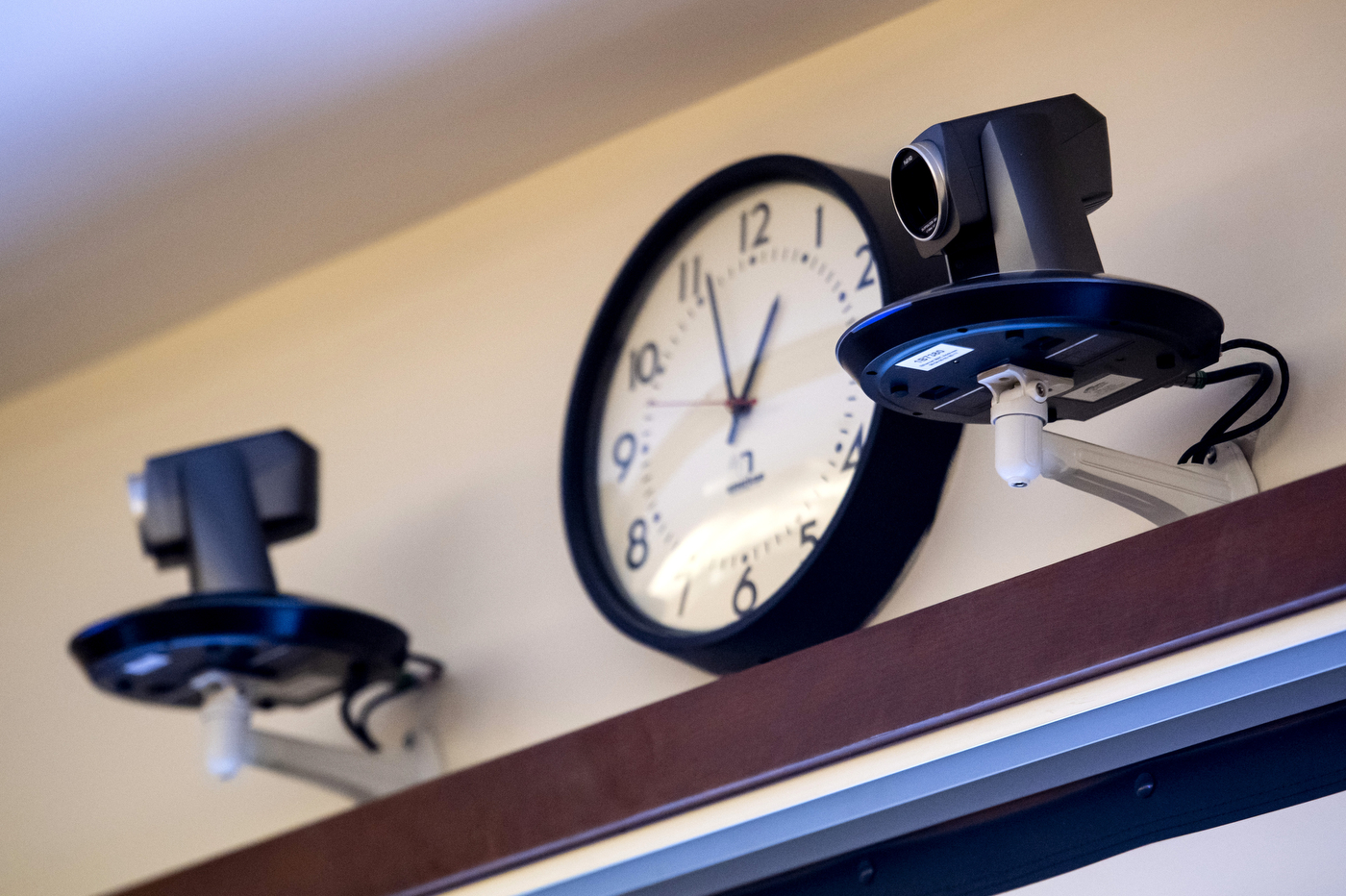
“We can’t all be in the classroom together,” said Jesse Savage, an academic systems administrator at Northeastern who has been working on upgrading classrooms on the Boston campus all summer. “What we’re trying to do with the NUflex experience is we’re trying to create an inclusive experience for everyone.”
On Tuesday, Savage demonstrated just how Hybrid NUflex will work with a group of engineering graduate students in the classroom and several deans joining remotely.
The first step was to get everyone to join a Zoom call. Instructors will also be able to use Teams if they prefer. From a touch screen at the front of the classroom, Savage could toggle the projected display to show the video call—allowing students in the classroom to see the faces of those joining remotely.
But the Hybrid NUflex experience has little in common with a standard Zoom call. The cameras at the front of the room use audio cues from the hanging microphones to automatically pivot towards any speaker, providing a dynamic view of class and facilitating discussions between students regardless of where they are.
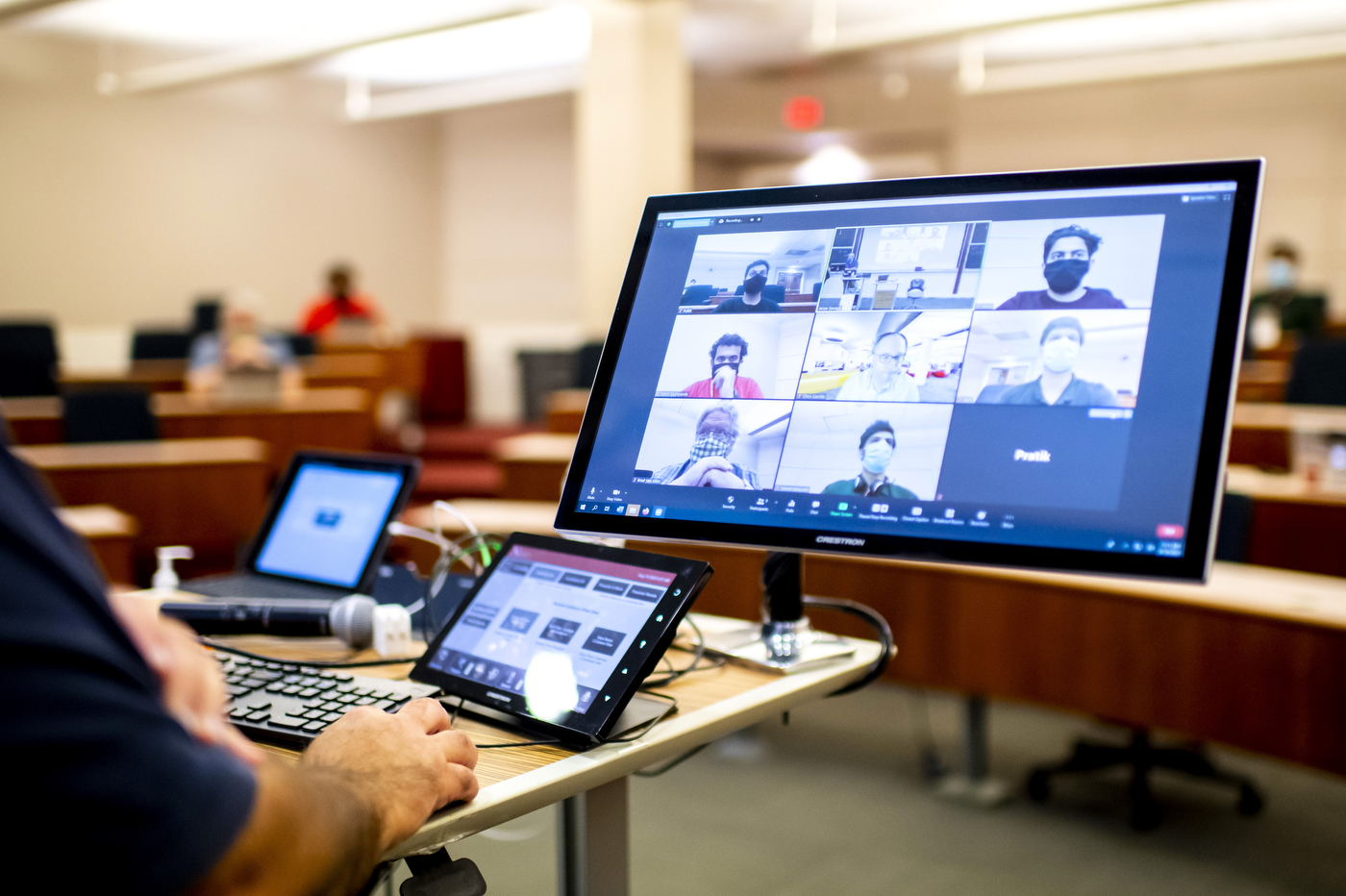
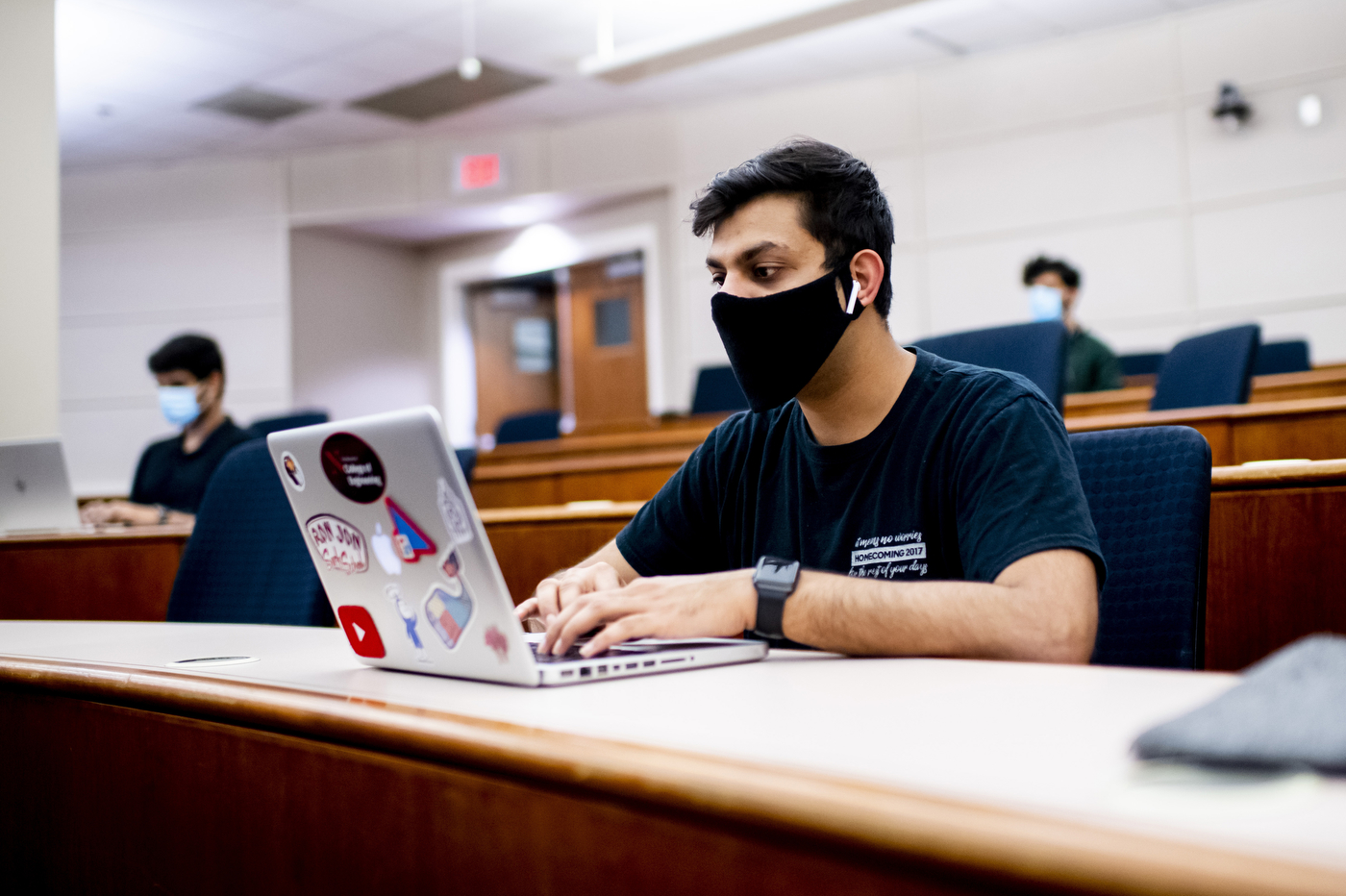
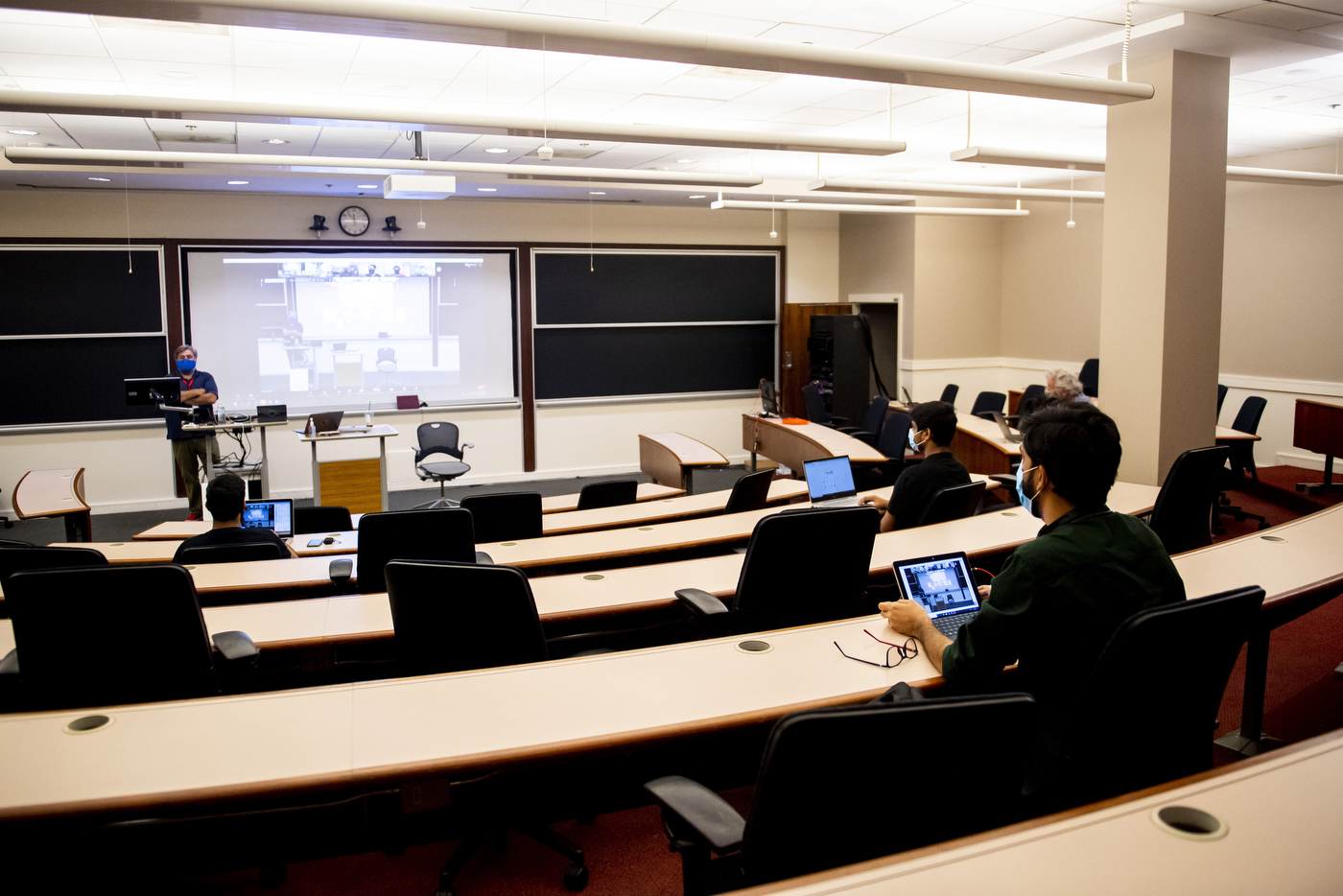
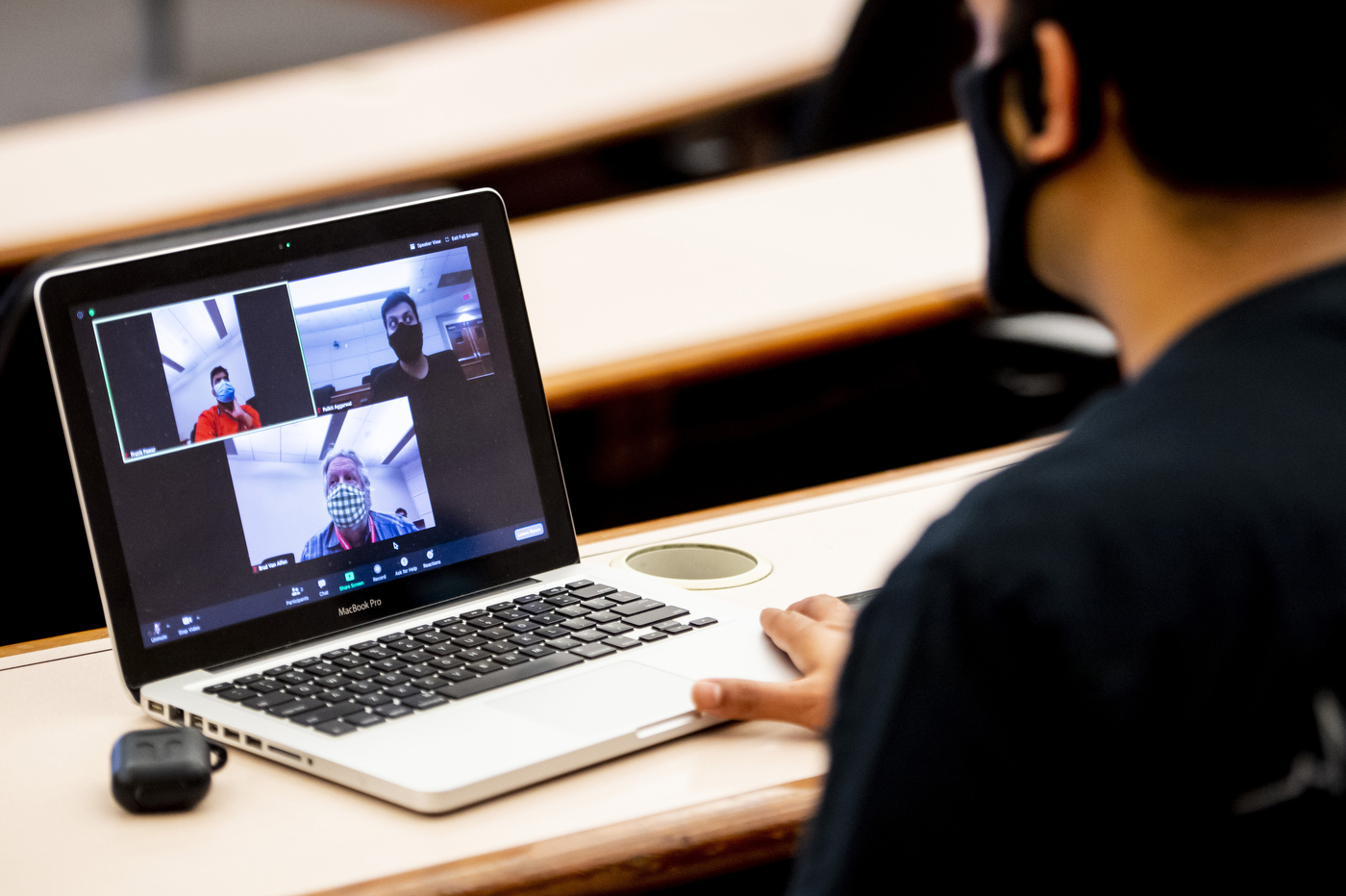
There are also plenty of options for instructors to adapt the technology to their preferred teaching style. Professors can share and annotate slides using either their own device, or a provided touch screen. They can also project a digital white board and draw on it. Slides and drawings can be easily saved and distributed later.
“With NUflex, you have the ability to record discussions and save notes,” said Ken Henderson, chancellor and senior vice president for learning. “You can review topics that were discussed in class, which is an additional tool for the learning process.”
Recording is at the discretion of the instructor, and students will not be recorded without their knowledge and consent.
Savage demonstrated how professors teaching in person can direct the camera in the back of the classroom to follow them as they move or manually adjust it via the provided touch screen. They can also select preset locations for the camera that are specific to the classroom—they might want it to focus on a particular blackboard, for example.
Most of Northeastern’s faculty members are expected to return to campus this fall; less than one third of faculty have requested to stay remote.
Those professors teaching from home will have most of this same functionality, although manual control of the cameras must be done in person. An in-class instructional assistant will ensure the system is working properly.

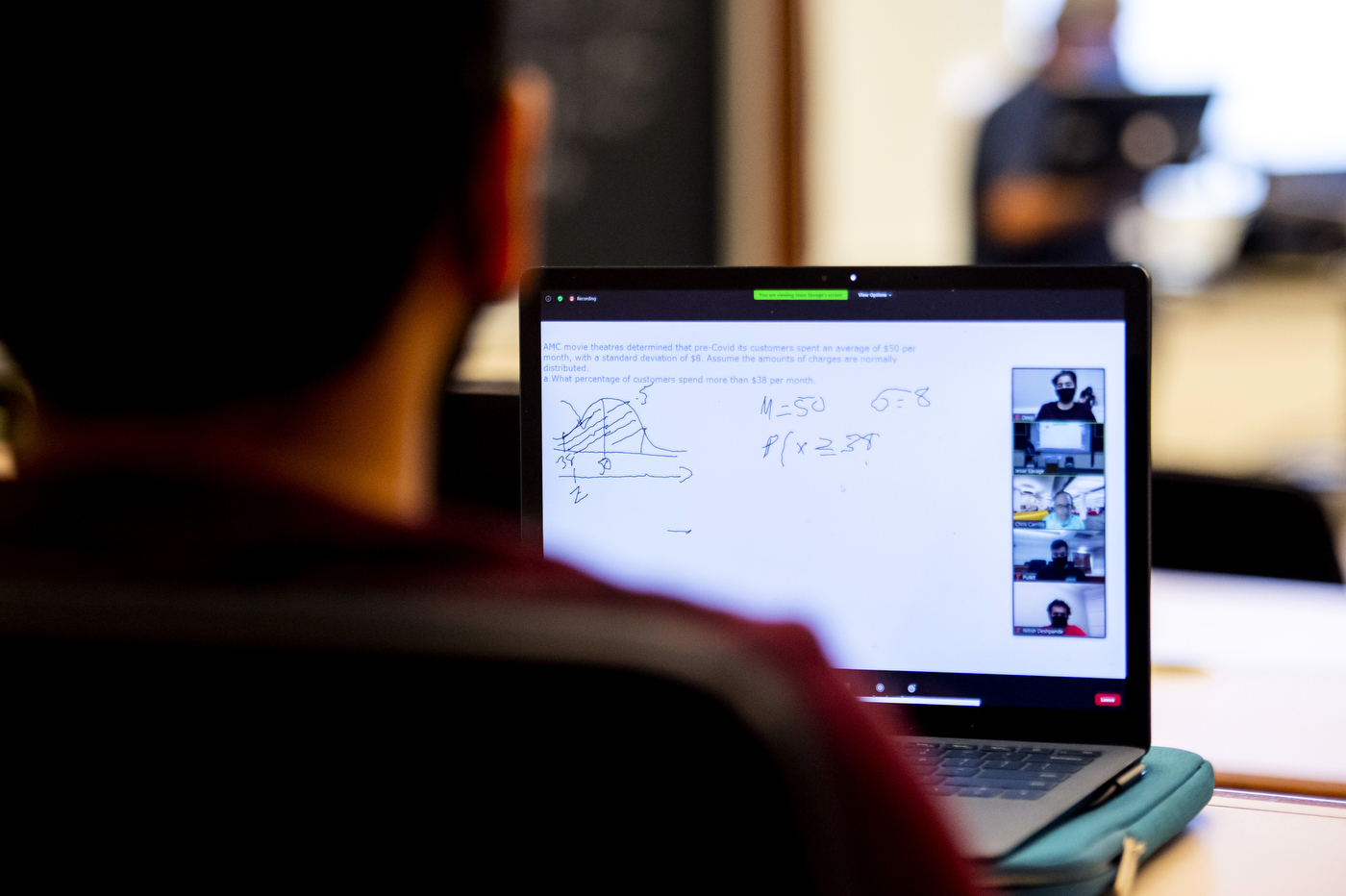
“We have to be very creative and inclusive,” said Hazel Sive, dean of the College of Science. She suggested creating videos that “bring in new faculty to show what it’s like to be upskilled in order to teach creatively.”
For group work, Zoom’s breakout rooms make an effective tool. Students can work on projects together over video chat, whether they are in the same room or hundreds of miles away, and instructors can jump from ‘room’ to ‘room’ to check in.
“It’s another way to provide our students with a global mindset,” said Henderson. “Students can take these classes from anywhere in the world, and with that they bring new perspectives.”
“This is a huge learning experience,” said Uta Poiger, dean of Northeastern’s College of Social Sciences and Humanities. “Both faculty and students will adapt in that context, and we need to really draw on everybody’s creativity and patience.”
One hundred and sixty nine classrooms on Northeastern’s Boston campus will have full Hybrid NUflex capabilities built in. A smaller number of additional classrooms will be outfitted with the same technology, but the cameras will not have an automatic tracking option. The university will also have over 60 mobile carts with Hybrid NUflex capabilities that can be used in other classrooms. Classrooms that do not have Hybrid NUflex setups will still be able to support mixed remote and in-person learning—they will be equipped with microphones and cameras to effectively cover the instructor and teaching areas.
“We’re excited to see students return to campus—I think that’s going to be exciting for everyone,” Savage said. “That’s the whole point, is to bring everybody back to campus so we can be a community again.”
For media inquiries, please contact media@northeastern.edu.






